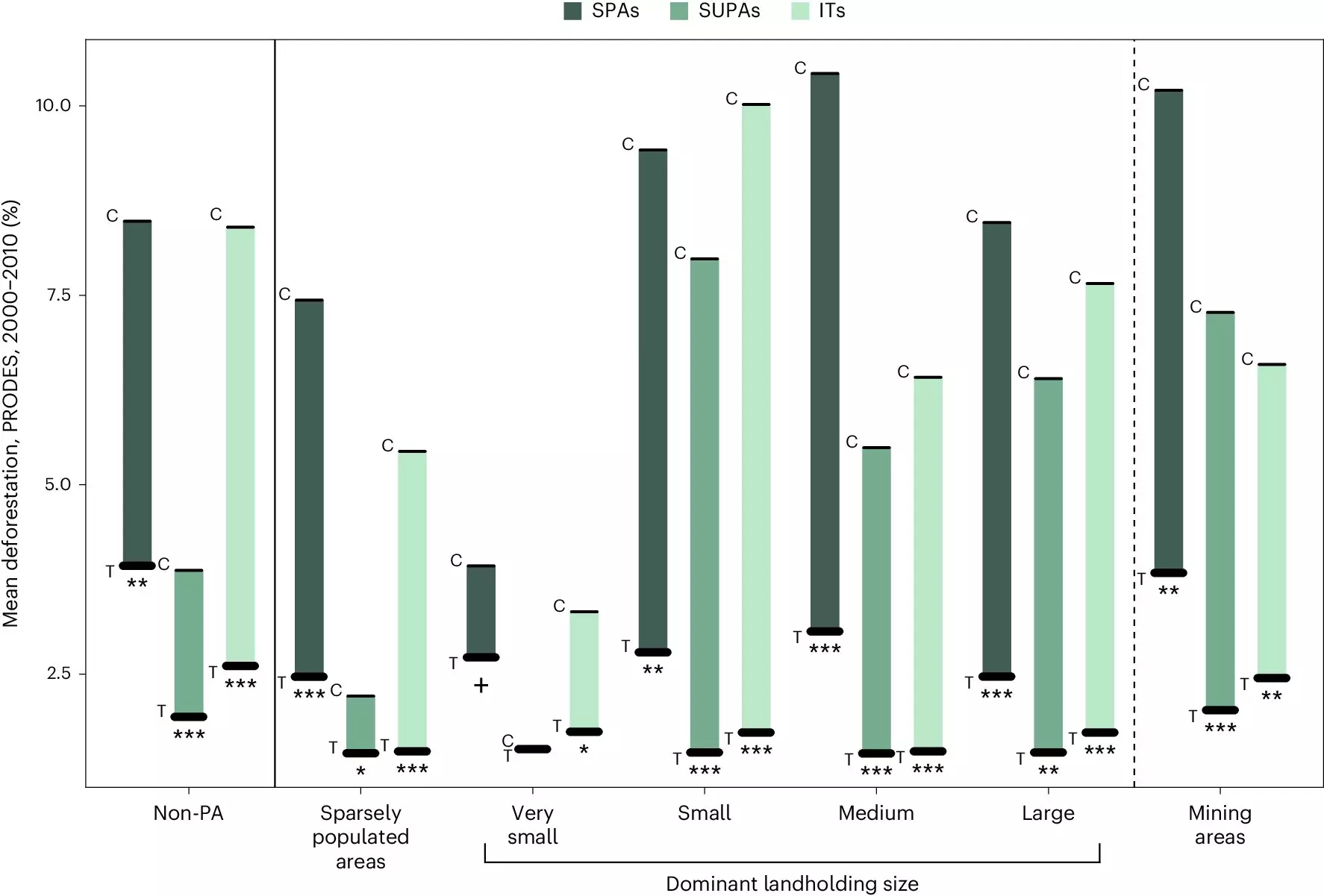An in-depth analysis conducted on land protection initiatives in the Brazilian Legal Amazon (BLA) revealed a significant reduction in deforestation rates by up to 83% from 2000 to 2010. These findings underscore the crucial role of land protection policies in achieving ambitious environmental goals, such as the UN biodiversity target to safeguard 30% of the planet’s surface by 2030. However, despite the progress made in curbing deforestation rates, the region still lost 5,000 square kilometers of rainforest in 2023 alone, underscoring the need for more robust and effective conservation measures.
The Impact of Land Protection Policies
While land protection initiatives have proven effective in preserving the Amazon’s biodiversity and mitigating climate change, recent research published in Nature Ecology & Evolution shed light on the hidden socio-economic costs associated with these conservation efforts. According to the study, Indigenous Territories (ITs) in the Amazon experienced up to a 36% decrease in incomes compared to other land uses. This revelation underscores the complexity of decision-making when it comes to establishing and expanding conservation projects, as policymakers must navigate the trade-offs between environmental protection and social well-being.
The research conducted by experts from the UK, Brazil, Sweden, and the US examined three types of protection arrangements in the Amazon: Indigenous Territories, strict protected areas, and sustainable use protected areas. By comparing the environmental and socioeconomic outcomes of these protected areas to those used for agriculture and mining, the analysis provided a comprehensive assessment of the policy impacts on both people and the environment. The study’s findings highlight the need for a more holistic approach to conservation that takes into account the socio-economic well-being of Indigenous communities.
Indigenous people in Brazil face significant social and economic challenges, with 33% living below the poverty line. It is essential that land rights for Indigenous communities are accompanied by additional support programs to address these inequalities. Efforts to bridge the gap between conservation and development must prioritize social protection initiatives and remove barriers to access existing support programs. Dr. Johan Oldekop from The University of Manchester emphasized the need for a balanced approach that safeguards land rights while ensuring the socio-economic well-being of Indigenous peoples.
The Role of Indigenous Territories in Biodiversity Conservation
Recent scholarship suggests that Indigenous Territories play a crucial role in preventing deforestation and protecting biodiversity. Dr. Bowy den Braber, the lead author of the study, emphasized the importance of carefully weighing the benefits and drawbacks of different land use options to maximize progress towards both conservation and development goals. Dr. Marina Schmoeller, a co-author of the study, highlighted the critical role of Indigenous territories in biodiversity conservation, particularly in light of ongoing debates in the Brazilian Supreme Court regarding Indigenous land claims.
Protected areas and Indigenous Territories have proven to be effective in reducing deforestation rates in the Amazon. However, the study’s findings underscore the need for a nuanced approach to conservation that addresses the socio-economic costs and benefits associated with land protection initiatives. Balancing conservation goals with the well-being of Indigenous communities is essential to ensuring the long-term sustainability of the Amazon’s rich biodiversity. By acknowledging the complex relationship between land protection policies and socio-economic impacts, policymakers can develop more inclusive and effective conservation strategies that benefit both people and the environment.


Leave a Reply